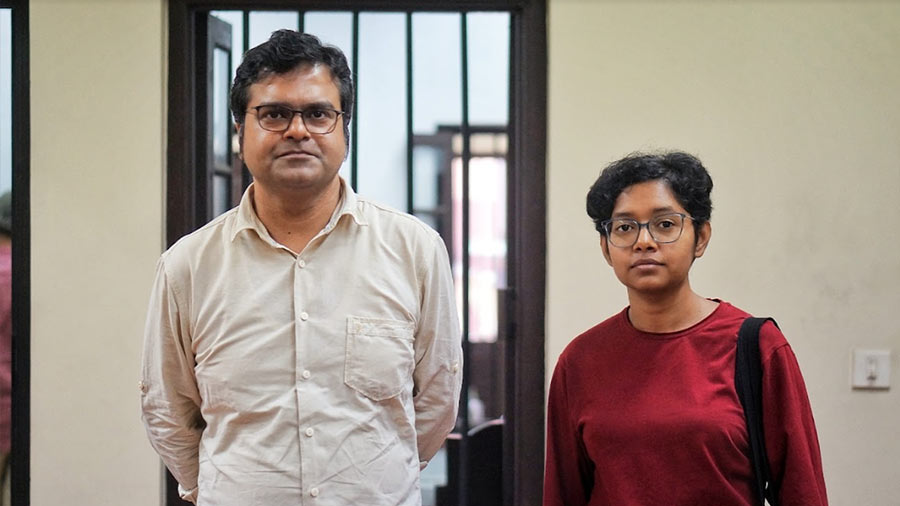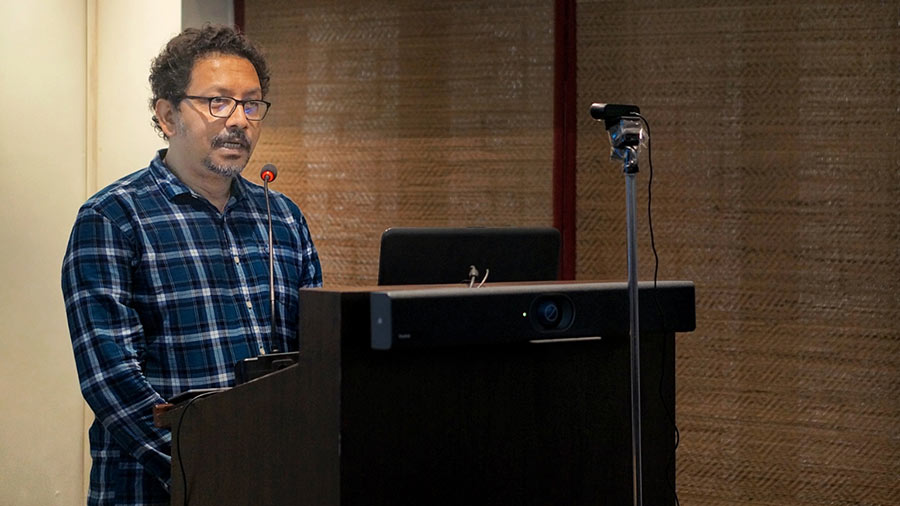Somnath Hore, pioneer of the legendary pulp-print technique, and his exploration of pulp as part of the printmaking process was in focus as Anshuman Dasgupta, art historian and faculty at Kala Bhavana, gave an insightful talk at the Jadunath Bhavan Museum and Resource Centre on February 11.
The event organised by DAG saw Dasgupta take the audience through Hore’s fascinating journey from being born in Chittagong, the days before Partition, his journey to Visva-Bharati and his path-breaking reaction to major events like the Bengal Famine through his prints.
“Somnath Hore’s life offers an understanding of how an act or object leaves such an imprint on time that it becomes an event. Pulp is a neutral material till you make use of it, and time leaves its imprint to create art,” Dasgupta said.
The talk also touched upon how Hore’s work had a refreshing nuance while depicting human emotions like love, his abstract style of expression, and his own politics percolating onto the prints. “Discussing Somnath Hore is like discussing an organic individual. He was associated so closely with his material that he can’t be disassociated from them,” Dasgupta concluded.

Art history students and PhD scholars at Kala Bhavana, (L-R) Subasis Chakraborty and Poulami Pal, were in the audience Soumyajit Dey
The audience was fascinated by Dasgupta's talk. “The insights into Somnath Hore's life and artistic journey were really thought-provoking. I particularly enjoyed understanding his experimentation with pulp which in a way resulted into his famous 'wound' series. I look forward to attending many more such events by DAG,” said Poulami Pal of Kala Bhavana.
“This is about unpeeling the layers behind this art and finding more connections with it. We plan to look closely at one such material every two months, and through it try to interpret the artwork and explore the material,” said Sumona Chakravarty, vice-president, DAG Museums.
